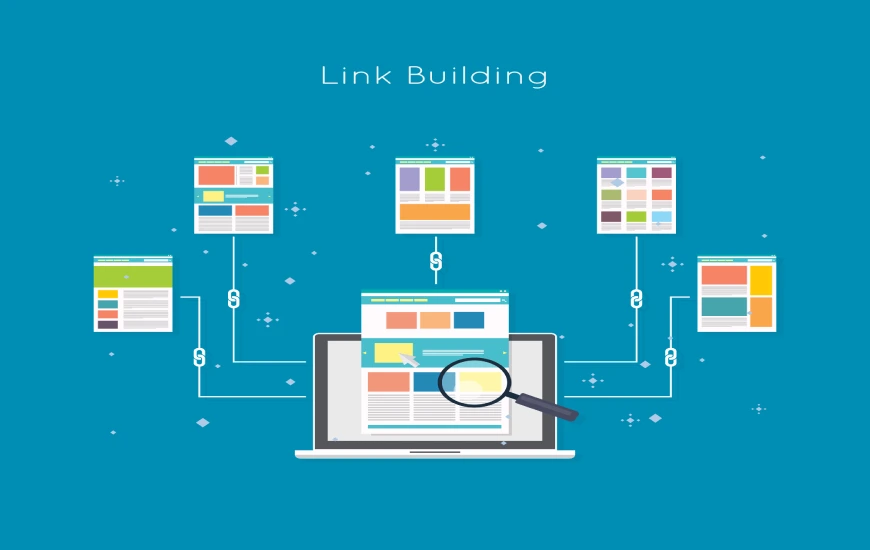Starting a new website is exciting, but getting noticed online can feel like shouting into a crowded room. One of the most effective ways to boost your visibility and authority is by building backlinks—links from other websites pointing to yours. Backlinks act like votes of confidence, showing search engines that your content is trustworthy and valuable.
The more trusted sites that recommend you, the more Google trusts your website. For a new site, backlinks are not optional—they’re the foundation of growth. In this guide, I’ll walk you through practical strategies to build high-quality backlinks for a new website, helping you improve your search rankings and attract the right audience from the very beginning.
What Are Backlinks and Why Do They Matter?

Think of backlinks like word-of-mouth for the internet. If someone respected in your industry mentions you, people pay attention.
There are two main types of backlinks:
- Dofollow links – these pass authority and help with rankings.
- Nofollow links – these don’t pass SEO value directly but can still bring visitors.
Not every backlink is good. Quality matters far more than quantity. A link from a respected site in your niche is worth far more than dozens of random links.
Make Sure Your Website Deserves Links
Before you start chasing backlinks, prepare your website. Early on, I made the mistake of asking people to link to thin, weak content. Nobody wanted to.
Here’s what works better:
- Write useful, detailed articles that solve real problems.
- Polish your on-page SEO with clear headlines and smart internal linking.
- Create at least one pillar resource (like a guide, checklist, or tool) that people naturally want to reference.
Backlinks are earned, not forced. People only link to something they see as valuable.
Here are methods that have consistently worked for me and others starting fresh.
Strategies to Build Backlinks for a New Website

1. Guest Posting
Guest posting is one of the oldest and most reliable ways to earn backlinks. You write an article for another website in your niche, and in return, you get a link to your site.
Steps I use:
- Find relevant blogs that accept guest posts.
- Read their content to understand the style and audience.
- Pitch a useful topic idea instead of just saying, “Can I guest post?”
The trick is to focus on their readers. When your article helps their audience, you get exposure and a backlink.
2. Broken Link Building
This method is about helping site owners while helping yourself. You find broken links on their site and suggest your content as a replacement.
I use free tools like Broken Link Checker or premium tools like Ahrefs. Once I find a broken link, I send a short email like:
“Hi, I noticed a broken link on your resources page. I have a guide on the same topic that might fit as a replacement.”
It’s a win-win. They fix their site, and you gain a backlink.
3. Resource Pages and Directories
Many websites have “resources” or “useful links” pages. If your content adds real value, you can ask to be included.
For example, a career advice blog might have a page listing resume tools and guides. If you run a site about resumes, your content fits naturally.
Be careful with directories. Only use niche-specific and trustworthy ones. Avoid spammy “link farms.”
4. HARO and Digital PR
One of my best backlinks came from answering a journalist’s question on HARO (Help A Reporter Out). Journalists need experts, and if your answer is helpful, they’ll quote you and link back.
This takes patience, since not every pitch will succeed. But one backlink from a respected news site can outweigh dozens of smaller ones.
5. The Skyscraper Technique
Here’s a method that works if you enjoy creating detailed content.
- Find a popular article in your niche that already has lots of backlinks.
- Create something even better—longer, clearer, more up to date.
- Reach out to websites linking to the old article and show them your improved version.
When done right, many of them will switch and link to you instead.
6. Community and Networking
Sometimes, backlinks come from relationships. I’ve gotten links just by being active in my niche. Joining online communities, answering questions, and contributing insights made people notice me.
When you’re helpful in forums, groups, and platforms like LinkedIn or Quora, people naturally reference your content. It feels organic, not forced.
Tips for Outreach
The hardest part of link building for beginners is outreach. Sending that first email can feel awkward. I’ve learned a few things that make it easier:
- Keep emails short. Busy people won’t read long pitches.
- Personalize—use their name and mention something from their site.
- Follow up once, politely. Don’t spam.
Think long term. Outreach is about building relationships, not just chasing a quick link.
Mistakes to Avoid
I’ve made plenty of mistakes in my early backlink campaigns. Learn from them:
- Never buy cheap links – they can get your site penalized.
- Don’t stuff anchor text – use natural wording instead of repeating the same keywords.
- Don’t ignore relevance – a backlink only makes sense if it connects to your topic.
Don’t expect overnight results – link building takes time.
How to Track Progress
After building links, track how they impact your site. I recommend:
- Google Search Console – free and shows which sites link to you.
- Ahrefs or SEMrush – paid tools that show backlinks and competitor data.
- Traffic and rankings – if you see steady growth, your efforts are working.
Remember, backlink building is a marathon. The results build up slowly but last a long time.
Final Thoughts
Building backlinks for a new website can feel overwhelming. I know—it took me months before I saw any traction. But once I understood that backlinks are about value and relationships, things changed.
Start small. Write useful content. Reach out to one blogger. Fix one broken link. Answer one HARO request. Over time, these small wins add up.
Don’t chase shortcuts or spammy tactics. Focus on quality, consistency, and genuine connections. If you do, your new website will gain authority and trust—and with it, traffic and rankings.
So don’t wait. Pick one strategy today and take your first step.